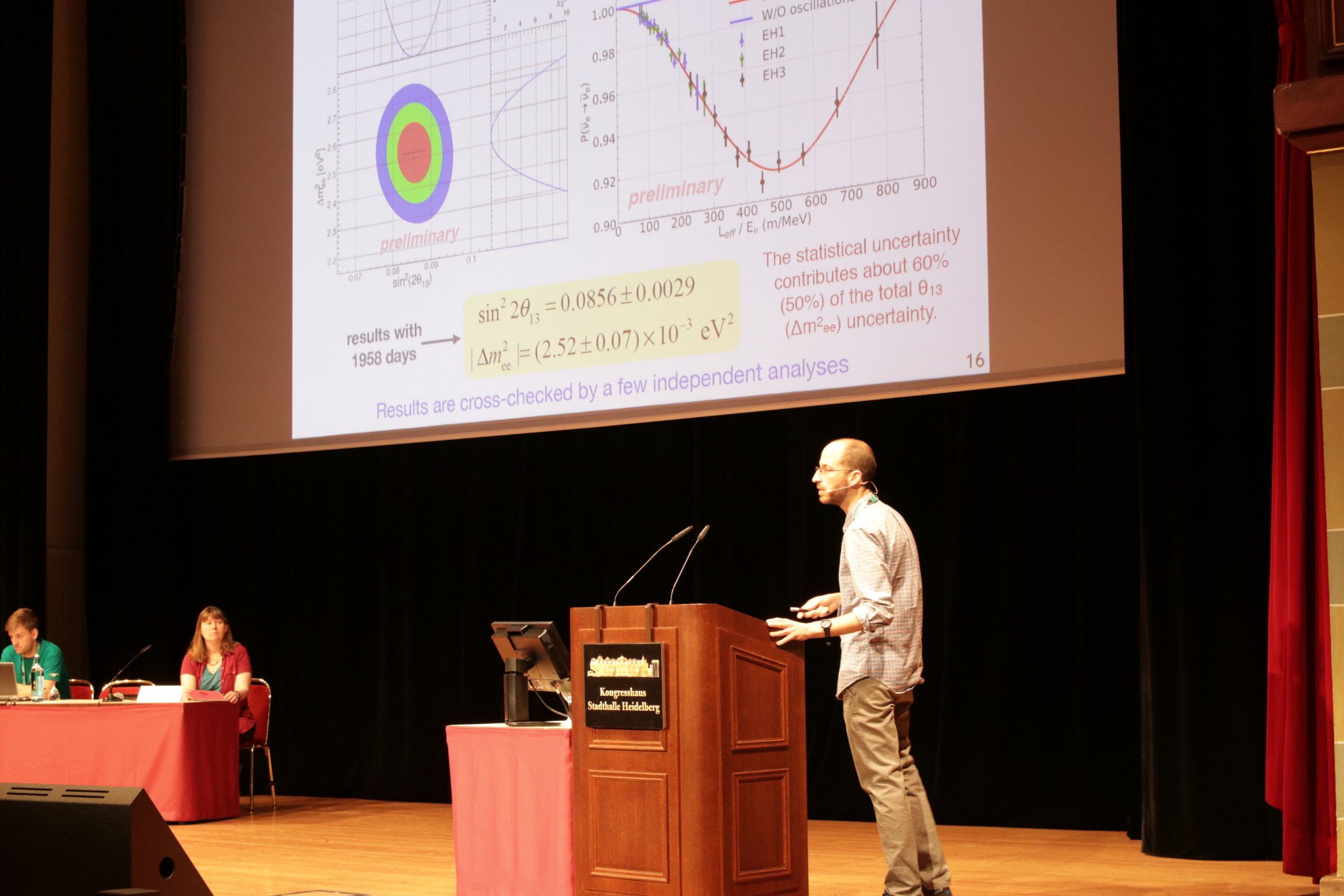News & Events

Day 2 of Neutrino 2018 conference: reactor experiments
Tuesday, 5 June 2018
The second day of the Neutrino 2018 conference in Heidelberg has started discussing reactor neutrino experiments, with new results from the DAYA BAY, DOUBLE CHOOZ and RENO experiments.
The DAYA BAY collaboration has shown for the very first time the results after 1,958 days of data collection, with four million antineutrino interactions (0.5 million at the far site), the largest antineutrino sample from a reactor experiment. The new data, together with a better determination of the energy response model, allow them to measure the reactor mixing angle and the effective mass splitting with a precision of 3.4% and 2.8%, respectively. The new reported values are sin22θ13 = 0.0856 and |∆m2ee|= 2.52x10−3eV2. DAYA BAY will run until 2020, when they expect to reach a precision in the mixing angle below the 3% level.
The DOUBLE CHOOZ experiment has reported new results with three years of data collection. They measured the reactor mixing angle to sin22θ13 = 0.105 with a relative error of 13%. They expect to run for two more years of data taking.
After 2,200 days of data collection, the RENO collaboration has released its last results. Values of sin22θ13 = 0.0896 and |∆m2ee|= 2.52x10−3eV2 have been reported with a precision of 7.6% and 5.2%, respectively. Concerning the light sterile neutrino searches, a stringent limit in the |∆m241| < 10−2 region has been set. Finally, a correlation between the 5 MeV excess and the 235U fission fraction has been reported for the first time by the collaboration. The details of the last RENO results can be found in its recent paper.
The three experiments agree with each other within the 2σ region and are compatible with the three neutrino oscillation framework.
In the future of reactor experiments, the JUNO experiment is expected to start collecting data in 2021 with the aim of determining the neutrino mass hierarchy. They also expect to reach a precision of sub-percent level for the θ12,∆m221 and ∆m2ee.
Follow the conference and these very interesting results at the conference website.
Text by Olga Mena, Xabier Marcano, Josu Hernández-García, Álvaro Hernández-Cabezudo & Bruno Martín.


